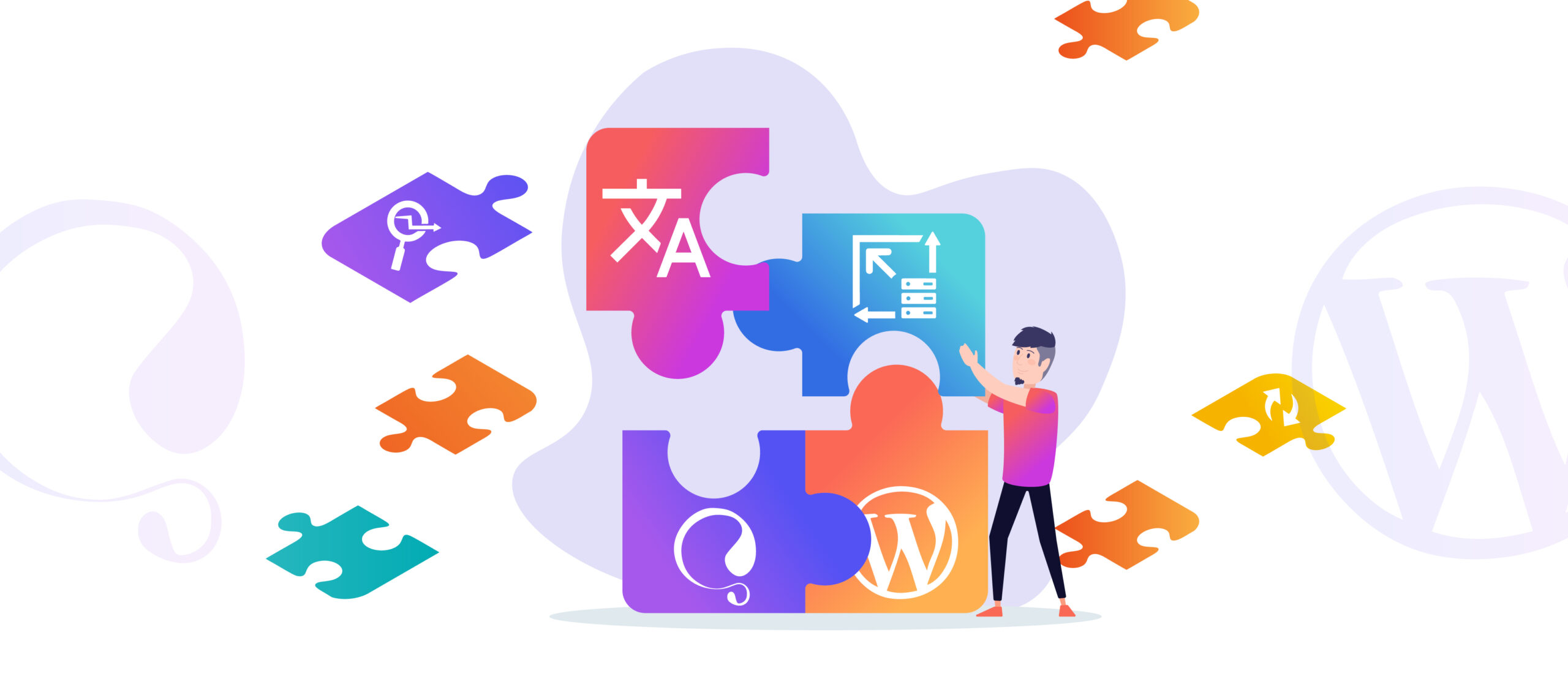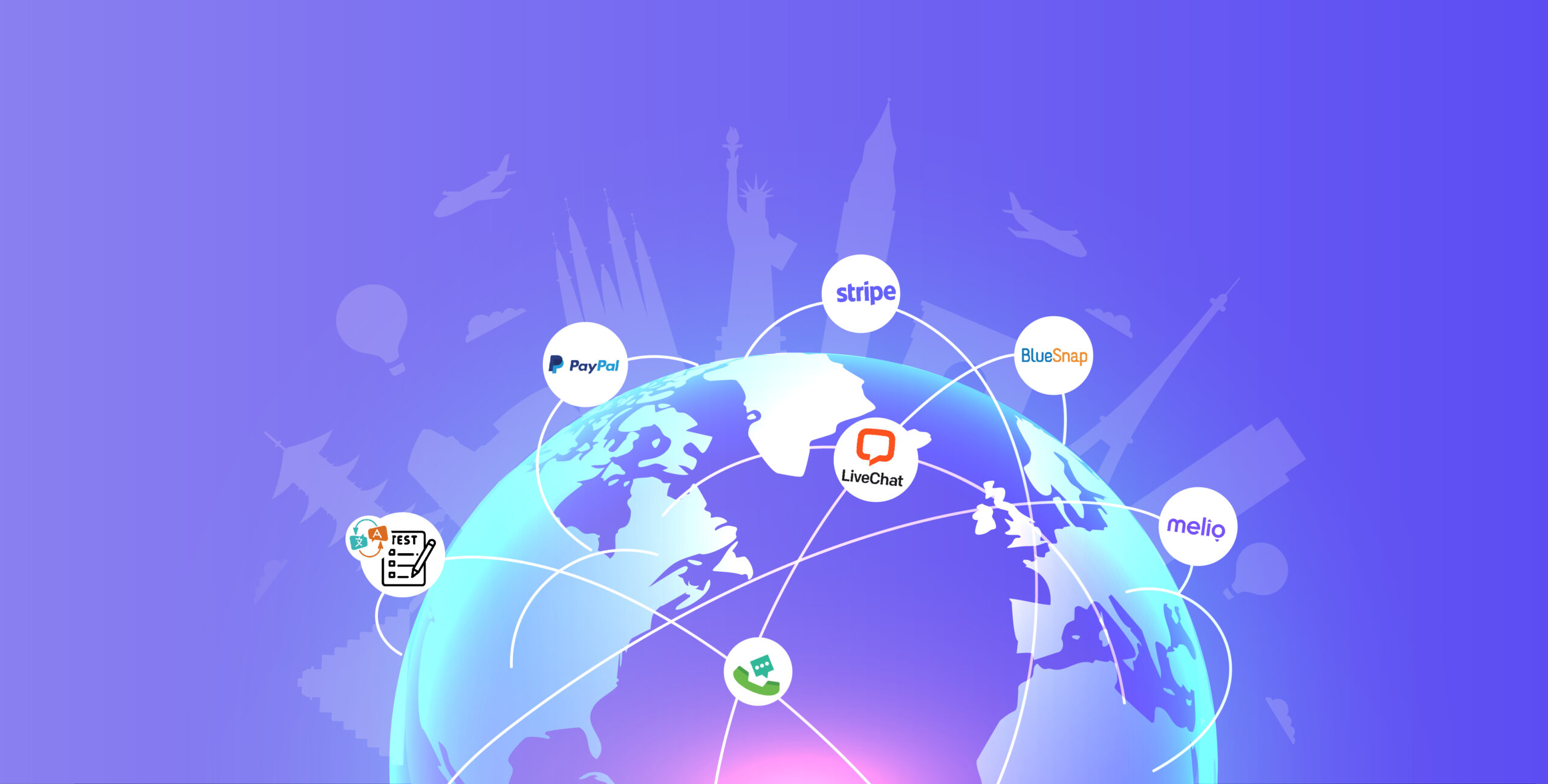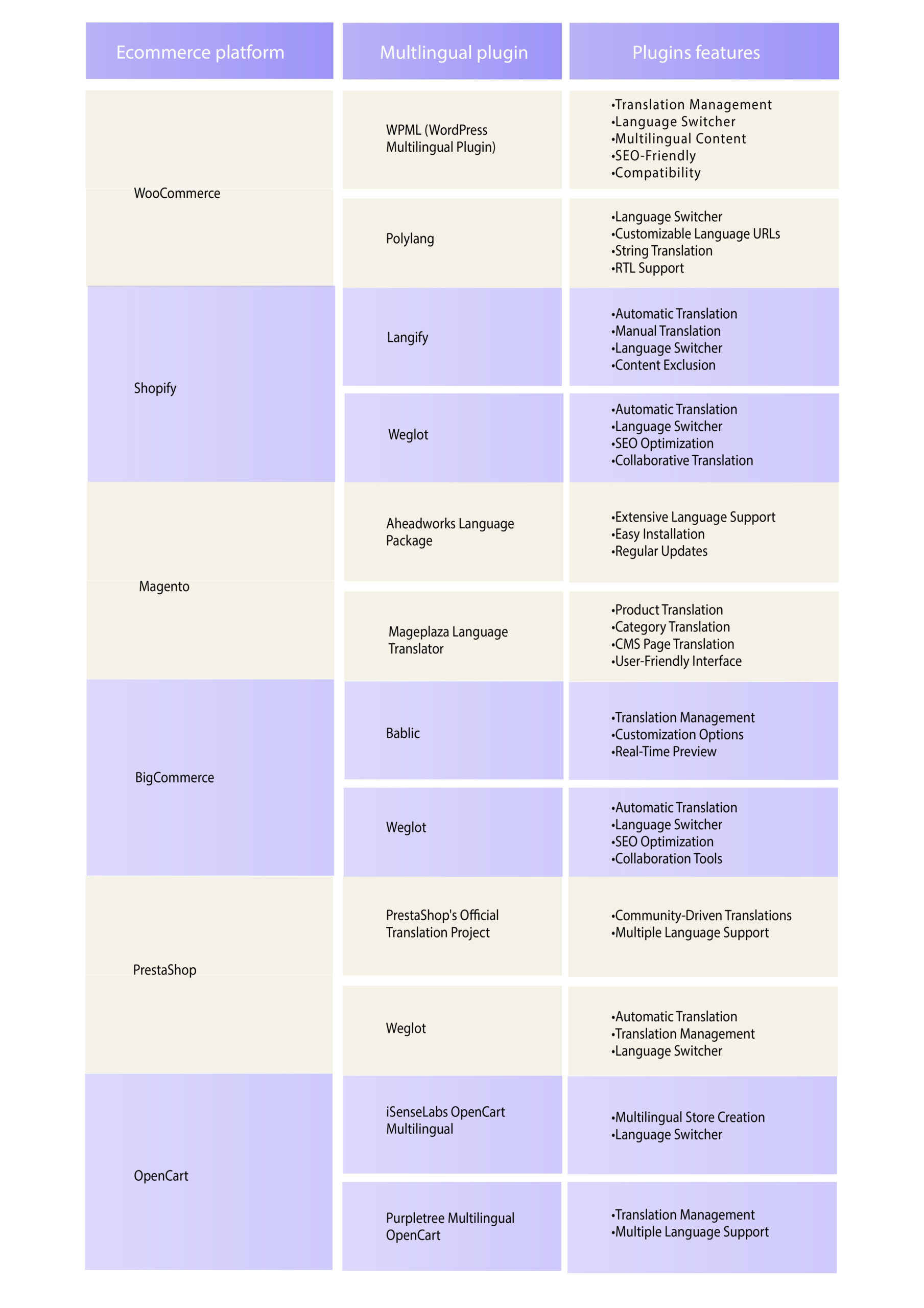Expanding your eCommerce store across the globe can be complex. It’s a no-brainer that entering the boundaries of the global marketplace is going to be rather tricky. Not just because of the vast frontiers that you have to compete against. The sheer task of communicating to a vast audience in their language can be a daunting task. Very few businesses analyze whether their customer journey works out in other regions and languages. In contrast, some companies are unaware that reaching out to their customers internationally with the help of content is very important. WooCommerce store with good content speaks to each consumer. Now remember that it is not just about the right translation, it is also about giving a complete multilingual eCommerce experience to your consumers.
“Language is a powerful tool that has the ability to transcend barriers, break down walls, and bring people closer together.” – Kofi Annan.
If one thing globalization had done would bring the world closer together than ever, it sprang open many doors into the global market. The advent of digitalization has helped to create broader connections among markets digitally worldwide. We live in a world where the internet is available in every nook and corner of the world, and it has become the round table to gather meetings amongst business owners.
Why Is It Important to Convert a Regular Store to a Multilingual Ecommerce Store ?
Presently, around 41.2% of internet users use English as their primary language, and this percentage continues to rise. If you are looking forward to entering new markets and doing business in multilingual countries. Communicating with your customers is the first challenge you might face. Yes, they might know English, but rather than sticking with English, ain’t it better to communicate in their own language? Now while talking in a language can capture the consumer’s mind while speaking in their own language is going a step further and pulling in their heartstrings. Translating the whole site is a solution, but it’s not as easy as it sounds; it is relatively time-consuming, challenging, and not to mention expensive. Furthermore, the cost can differ significantly based on the approach you choose. By understanding and analyzing the diverse expenses involved, you can maximize your website’s outreach by ensuring its accessibility in multiple languages.
Understanding eCommerce Localization

eCommerce localization is a classic solution, where an online store adapts to a new language and culture. The method lets you easily impart your message on your website through various languages. The brilliance of including eCommerce localizations is that it can build a path into global markets through cross-cultural translation and multilingual features.
So this is how eCommerce localization works,
It can give an in-depth multilingual translation of a website’s original language used in the content and convert it by infusing it with cultural value and design. Well, do you want to drag in your international buyers? Localization is the key.
Translation and Localization
Translation and localization are completely contrasting concepts, it is entirely relevant to differentiate between them earlier. So when we go for translation along the way it’s entirely possible to lose track of the most important aspect of including cultural adaptation of the content.
Localization comes into action by skillfully adapting the language so that you can cater to the specific needs of the target country. Now it’s quite relevant to include jokes, idioms, taboos, special preferences, and certain cultural features. At the same time, you need to replace images, opt for design, and change colors. Ideally, I want to point out to the store owners that localization will be the stepping stone to globalizing your business.
Benefits of eCommerce Localization
eCommerce Localization Includes SEO (Search Engine Optimization)
Yes, eCommerce localization incorporates Search Engine Optimization, the strategy is to utilize the most searched keywords recognized and used that are relevant for your business throughout the internet while localizing your website.
Imagine you got to connect with an important client or are trying to establish long-term communication with your international customers, who shop from your site from time to time. In these scenarios, it is essential to maintain consistency across your various marketing channels, like email marketing, remarketing, banners, ads, and product descriptions.
Strengthen Your Brand Awareness.
I have a bone to pick with the store owners, who are entirely unaware that the “Higher your brand awareness rises, the higher your revenue rises too. Let’s say that you’re entering a convenience store to buy milk. Well, now, it’s quite the norm that you are inclined to buy a brand you know of than one you have never seen before.
Multilingual eCommerce localization embodies a brand that aims to connect with the target consumer base. As a brand, localizing and displaying the culture or value of certain countries is quite relevant by incorporating them into your brand image, message, and storytelling.
Consumers Prefer the Native Language.
Well, now, this is not a secret that eCommerce customers usually prefer to shop from stores that are on more familiar grounds (in our case native or familiar language). But this is not the usual case, some customers only prefer to shop from sites that are in their native language. Let’s revisit Unbabel 2021 findings, according to the 2021 Global Multilingual CX Report, which shows that speaking in a consumer’s native language helps the business down the lane in building trust, empathy, confidence and helps relatively bring in more business. Thus it proves multilingual communication with consumers is important for a business to thrive.
Localization Leads to Globalization
Globalization has brought out extensive exposure for every kind of business owner out there. With the free circulation of information, products, services, and data available aids in promoting as well as expanding your business globally. Bringing in an advancing symbiosis of markets, businesses, companies, and governments. So in order to take your business to the next level, it is imperative to give your customer more than just translation. It’s high time you adapt your store to a multilingual store.
What is a Multilingual Website?

It’s obvious that business owners are always on the lookout for ways to expand their reach and cater to a diverse consumer base. Converting your store into a multilingual store can help you achieve this, well the reason being multilingual sites often can communicate with the consumers effectively. So a multilingual website primarily offers content in multiple languages that can help the customers to access, understand and interact with the site in the user’s preferred language. The diverse linguistic backgrounds that could be switched based on the users can make navigating your store’s ins and outs easier.
Investing in a multilingual site is like a boon for a business ecosystem that serves a broader audience in diverse geographies and speaks a different language. Suppose you are looking forward to communicating with your target audience. In that case, the key is to not just invest in a multilingual website alone but invest across all your digital assets and go all in for overall content creation. Be it blogs, brochures, white pages, product contents, ebooks, case studies, and other marketing collateral.
Benefits of Building A Multilingual eCommerce site
Grow and Expand your Business
From the beginning, we have known there is no better way to generate ROI for growing the business. The solution has always been simple, expanding your business to cater to a broader audience (native language) gives you a more significant probability of increasing your conversion rate. This, in turn, will directly impact your profits and revenue of your business. Big business tycoons like Apple, Amazon, and Facebook have set a stance by converting to the multilingual approach, foreseeing that this is the key strategy to growing their business.
Enter New Markets

With a multilingual edge, broadening one’s horizons across different geographies is a proactive and effective effort to minimize the consequence of potential losses and the local economy. Imagine the power of connecting with your consumers worldwide, where they can reach you easily as you can speak their language effortlessly.
This can spread your brand reputation, increase customer loyalty, give a great customer experience, and generate the ROI you anticipate. Here is where you can effectively strategies your business expansions using multilingual sites, as it can serve as a trial run before you expand your business exponentially.
Build Brand Awareness, Trust, and Credibility.
Multilingual eCommerce stores have always spoken the language of success. Now think about it, in a global marketplace, if your store speaks in one language alone, it’s like bringing a knife to a gunfight. If you are a store owner, building brand awareness, trust, and credibility is the strike to win over your customers. Multilingual capability can give your brand the power to resonate with customers on a whole new level.
By setting up a multilingual ecommerce store, you are not just casting a wider net also. You’re breaking down the language barriers to reach your customers. Speaking in their native language, you show a genuine commitment to your consumers; you go a step further in understanding your customer’s needs and connecting with them on a more personal level.
When you embrace multilingualism you are tapping into the goldmine of endless possibilities. Integrating multilingual capability into eCommerce stores is a powerful and creative strategy to build brand awareness, trust and solidify credibility.
Drive Qualified Traffic through Multilingual eCommerce Store.
eCommerce stores integrated with multilingual capability hold immense potential. Incorporating your store content with multiple languages gives you a fair chance to get featured in various search engine results and also significantly expand your audience reach.
As this contributes to your SEO, it helps to generate organic traffic to your store. Once a visitor comes to your site, the rest to convert them to customers can be easily achieved through the content. When offering multilingual customer service can foster a bond with customers. This opens up opportunities, propelling your website towards increased conversion and sustained growth.
Increase Conversions
When you interact with your customers in a language they are most familiar and comfortable in, give them a sense of being welcomed. I have said many times before that converting into a multilingual site can create a sense of belonging, increase trust, and convert visitors into customers.
Implementation and Considerations
Today’s global marketplace is swiftly shifting, as eCommerce business owners have realized by now that not all of their consumers speak English. The significance of catering to a more diverse range of audiences, who mostly prefer to shop in their native language, has increased in significant years.
Well, like I told you several times before, incorporating multilingual functionality into your business can aid you in tapping into new markets, improving user experience, and eventually generating a higher ROI. So now, let’s delve into some vital steps applied while implementing multilingual capabilities in your business.
Choosing the Right Multilingual eCommerce Solution for Store

So now that you are all set to convert your multilingual site, there are several things you have to consider before all this. Picking the right multilingual solution is a vital decision that can influence the success of your eCommercestore. There are several aspects you have to ensure while choosing a multilingual solution, you have to assess its feasibility, feature, compatibility, and scalability.
Plugins like WPML, Polylang, Langify, Weglot, Bablic, and Ahead Language Packages have revolutionized and helped to diversify the use of Multilingual eCommerce solution across the e-commerce industry for a past few decades.
Compatibility with Your Platform
When you pick a multilingual solution, choose one that is highly compatible with your eCommerce platform and content management system. Ensuring that it would integrate seamlessly without causing many compatibility issues or conflicts.
Translation Management System
Opting for a user-friendly translation management system (TMS) to handle translations effortlessly is ideal. So picking TMS that includes features such as string translation, workflow management, and collaboration tools can make the translation process effective.
Scalability and Flexibility
The multilingual solution you opt for should be flexible and expendable, as, at one point, you do have to expand to include additional languages or integrate with other markets. It is most suitable to opt for one with a high capacity as it should handle a growing number of languages and content without many performance issues.
SEO-Friendly
Select a solution that supports SEO practices for multilingual websites. They should contain certain language-specific meta tags, URLs, and hreflang tags in order to optimize your site’s visibility in search engines.
Support and Updates
A multilingual solution you take up for your site must provide support and update regularly. It’s wholesome when the solution you consider gives timely support, bug fixes, and updates to address any issues that could arise in the future.
Technical Considerations for Implementation:
URL Structure
First things first, figure out and decide on a URL Structure that is compatible with your multilingual website. So the usual option that you can go for is subdirectories for, e.g., example.com/fr/ or subdomains for, e.g., fr.example.com, to different language versions. Also, ensure the structure is SEO-friendly and easy for users and search engines to understand.
Content Translation
Pre-plan for an effective and efficient content translation process. If you have resources or depend on the project’s density, another option worth checking out is opting for a professional translation service or translation management system. As these kind of services can easily streamline translation workflow, maintain translation consistency, and manage language-specific content updates.
Multilingual User Interface
An important aspect to consider for a multilingual solution is the interface elements like menus, buttons, and forms. This should incorporate each language’s cultural preferences, ensuring your store has a seamless and localized user experience across all language versions.
Internationalization
So while you develop your eCommerce store, remember that it should be designed with internationalization in mind. This means you have to structure your code and database to handle multilingual content, character sets, date formats, and other localization-specific elements. Incorporating internationalization into a store’s design ensures seamless functionality across different languages and cultural contexts.
Performance Optimization
It is paramount to optimize your website performance with multilingual functionality. Which involves certain techniques like caching, content delivery networks (CDNs), and fine-tuning database queries to ensure fast loading times and give a smooth user experience across all language versions on your website.
Localization and Cultural Adaptation Best Practices.

Cultural Adaptation
Personalizing your content to coordinate with your target audience’s cultural preferences and sensitivities is very important. So that means it includes adding product descriptions, imagery colors, and marketing messages to connect with your local audience.
Opting for Local Payment Methods
Now another interesting way to lock in your consumers is by localizing your payment methods. This is because they are trusted and quite popular in each target market. Well, this can enhance your customer user experience and improve conversion rates by offering a more conventional, familiar, and convenient payment option.
Localized Customer Support for eCommerce store
Now giving in customer support in the native language of your customer. It’s ideal for providing support in multiple languages to various communication channels like email, live chat, or phone support. As this could ensure effective assistance and build customer trust.
Localization Testing
If you build a system, it is essential to test them. Thoroughly testing all language versions of your website is to make sure that they are functional and linguistically accurate. Also, verify that the user experience checkout process and localization elements work seamlessly across various languages.
Now that you have read through these technical aspects to keep in mind is start with the,
- Right multilingual solution,
- Learn more about localization
- Finally adapt it to your eCommerce store.
This results in enhanced user experience, higher engagement, and generating the ROI you are looking for.
E-Commerce Platforms and Multilingual eCommerce Solutions
Last but not least,
The world has become more data-centric if you think about it. There was a time business owners checked newspapers to know commodity or stock prices. Now, all you have to do is search either on products or services, and everything is on your screen. With digitalization, the markets have become more accessible. This has given rise to competition among vendors, local business owners, and global giants.
Also, the process of entering the market has become versatile. Store owners have to step up the games as shoppers have moved more by personalization and the best way to do it. Creating a user experience that is interlinked with multilingual capability. This would eventually help you to grow your business and generate ROI.











 THANK YOU!
THANK YOU!